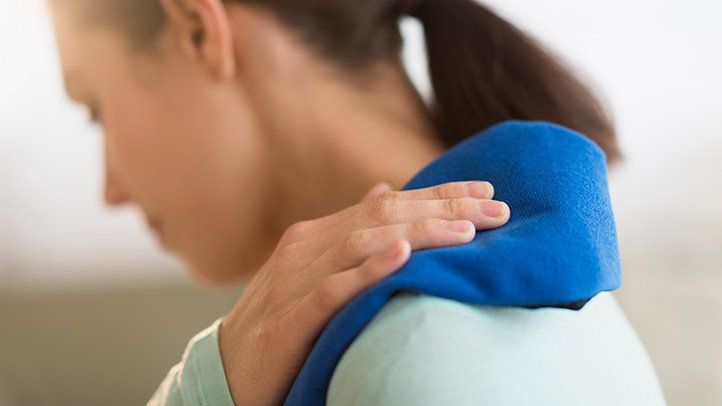How to Treat Bursitis, Whether It’s Caused by Psoriatic Arthritis or Not

[ad_1]
If you have psoriatic arthritis , you may also be dealing with bursitis — a painful condition involving the bursae (small, fluid-filled sacs that cushion the bones, tendons, and muscles near joints). When bursae become inflamed, the result is bursitis. According to the Mayo Clinic, bursitis commonly affects the shoulders and hips but can also lead to pain in the elbows, knees, heels, and the base of the big toes . It often happens near joints you tend to use — or overuse — in making repetitive motions. While bursitis and psoriatic arthritis can have some similar pain symptoms, and can occur together, they are two separate conditions. Psoriatic arthritis (PsA), an inflammatory autoimmune condition, is characterized by a wide array of musculoskeletal manifestations, such as synovitis (swelling of the connective tissue that lines the joints), dactylitis (sausage-like swelling in the fingers and toes), enthesitis (inflammation where the tendon or ligament meets bone), and spondylitis (inflammation of the spine), notes Zhanna Mikulik, MD , an associate professor and the codirector of the psoriatic clinic at the Ohio State University Wexner Medical Center. Bursitis, on the other hand, is not a systemic condition and, in the absence of joint pain and swelling, it could be due to chronic low-grade repetitive trauma or acute overexertion, says Dr. Mikulik. Lifting heavy boxes over and over, shoveling, regularly playing an instrument or certain sports — all these can lead to bursitis. As can spending too much time in a position that puts pressure on part of your body — for instance, kneeling, notes the Cleveland Clinic . Bursitis can also be the result of an infection. While it’s not clear what role bursitis plays in psoriatic disease, says Mikulik, “several studies show a high incidence of bursitis in patients with psoriatic arthritis compared to healthy individuals.” Diagnosing Bursitis To diagnose bursitis, doctors rely on medical history and a physical exam, notes Mayo Clinic . Imaging tests and lab tests may also help in diagnosis. “A thorough medical history with particular attention to a history of skin disease, description of involved joints, physical exam, imaging and laboratory testing will help to distinguish between [bursitis and psoriatic arthritis],” says Mikulik.
Treatment of Bursitis Treatment depends on the area involved, says Mikulik. “Usually, initial therapy includes exercise and activity modification, nonsteroidal anti-inflammatory drugs (NSAIDs) or a glucocorticoid injection.” Rest, ice, and over-the-counter pain relievers may be enough — along with avoiding the activity that caused the bursitis. Icing the area within the first two days of symptoms can alleviate swelling, notes Mayo Clinic. (Don’t apply ice directly to your skin; always be sure to wrap an ice pack in a thin, soft cloth.) After that, apply a cold compress to the area for 15 minutes at a time, a few times a day. You might alternate that with a heating pad or hot water bottle wrapped in a towel, notes the Cleveland Clinic. RELATED: Heat and Cold Therapy Psoriatic Arthritis Treatment Physical therapy and exercise can strengthen the muscles around the affected joint. If the bursitis doesn’t resolve itself, a corticosteroid injection in the affected area can alleviate pain and inflammation. And if you have psoriatic arthritis, especially if your disease is not well controlled, optimizing your PsA treatment is also necessary. If bursitis is caused by a bacterial infection, it can be treated with antibiotics. A surgical procedure called a bursectomy may be needed to drain and remove the infected bursae, according to Johns Hopkins Medicine . RELATED: 10 Ways to Relieve Daily Hip Pain Prevention of Bursitis Pain Making some modifications to your activities and the way you move your body can reduce your risk of bursitis. The following can help. Take breaks when you’re performing repetitive movements. Use padding to protect your knees when you’re kneeling; for example, try a kneeling cushion if you like to garden. If you need to pick up heavy objects, be sure to bend your knees as you lift to avoid putting pressure on the bursae in your hips. Carrying weighty items can hurt your shoulders; try using a cart instead. Warm up before exercising to protect your joints from injury, advises the Mayo Clinic. RELATED: Psoriatic Arthritis Tips From Physical and Occupational Therapists
[ad_2]




